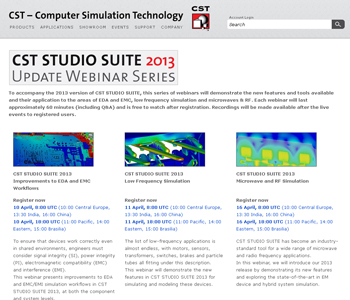Computer Simulation Technology (CST) has released the 2017 version of the electromagnetic simulation tool, CST Studio Suite. The latest edition includes a range of new tools for synthesis and analysis and improvements to existing features.
CST Studio Suite is an electromagnetic (EM) simulation software package with solvers for a wide of applications across the electromagnetic spectrum, as well as multiphysics and particle applications. All of the CST tools are available within a single graphical user interface and can be linked together for straightforward hybridization of simulations. CST Studio Suite is used in leading companies across the high-tech and manufacturing industries to develop new ideas, optimize products, and ensure standards compliance. The 2017 release of CST Studio Suite builds on previous releases with new features for broader and more in-depth analysis of EM systems.
Designer 3D (FD3D) can automatically synthesize cross-coupled and diplexer filter designs to meet the specifications including transmission zeroes, Q-factor, and equiripple. The complex and sensitive nature of these filters makes them challenging to design and tune with traditional methods. Coupling matrix extraction with FD3D offers an efficient way to fine-tune 3D filter structures.
The new Interference Task offers a straightforward approach for investigating potential EMI issues using coupling data from simulations. The Interference Task shows at a glance which combinations of RF systems can potentially lead to cosite interference problems, allowing mitigation approaches to be tested on a virtual prototype.
The ray tracing Asymptotic Solver in CST Studio Suite can now directly calculate the coupling between antennas. The Asymptotic Solver can simulate extremely large platforms such as aircraft, ships, and buildings very efficiently, making it well suited to many kinds of antenna placement scenarios. This can be combined with the Interference Task for detailed co-site analysis of vehicles, vessels and aircraft.
Version 2017 also sees the expansion of CST MPHYSICS Studio tools with the Conjugate Heat Transfer (CHT) Solver. This uses computational fluid dynamics (CFD) to simulate the flow of air through devices, taking fans and vents into account. With the CHT Solver, users can include the cooling systems in their multiphysics simulation, allowing these systems to be designed and optimized before constructing prototypes.



